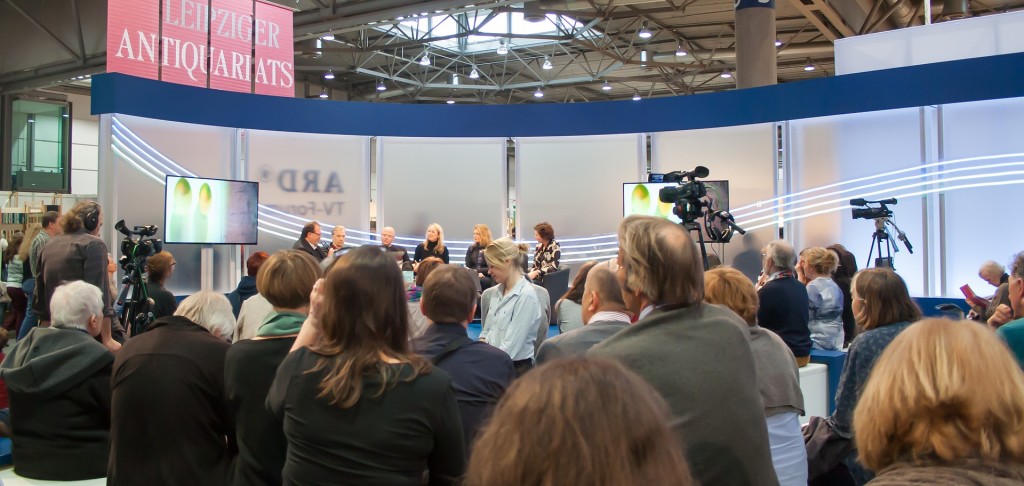Live events are a huge opportunity to meet people face to face and to give information out to a larger audience than one-on-one presentations. They can also be used for training as well as promotional marketing materials if you plan ahead and video record them well.
Video is a big deal, show it some respect.
Depending on the scope of the event and your available resources you might want to have a team member take the lead on video production. Just know that it is an all-consuming process that may require more than one person working full time to collect the raw materials (sound and visual) during the entire course of the event. In other words, asking someone to videotape the event when they are already responsible for some other aspect of the day is a big mistake.
If you do have a member of your existing team film the “show” then be certain that they have the training and support they need way ahead of time. This is going to become a very valuable asset once everybody goes home and should be taken very seriously before and during the live event.
Whether or not you hire an outside vendor to record and/or edit your event, the following questions should definitely be discussed with your videographer beforehand so that they will be prepared to get all the elements you need to get the most out of your investment. Important: do not wait until the day of the event to deal with this stuff.
When does the event actually start?
Plan on having someone there at least one hour before the first guests arrive so that they can be set up and ready to shoot (with good camera angles, lighting and sound) way before they need to be. This will allow for any system checks and unexpected technical glitches to be resolved with enough time to capture each important moment of every presentation.
When does it end?
The length of an event is critical to determining how much media will be required to store all the raw footage as well as how much battery life will be needed to ensure that the entire program can be captured. Always estimate generously, few things are more frustrating than running out of supplies before the show wraps.
What exactly is supposed to be going on?
Having a clear and accurate written program is a huge step in the right direction, make sure that everyone involved in the production has a document that outlines what is planned. Including…
Who is going to be speaking (both formally and informally)?
It is totally unacceptable to have someone talking without a microphone dedicated to picking up their voice when shooting a video, unless you do not want to hear what they are saying. Even if there is a public address sound system in use, you still need to be certain of who is going to be speaking and what you want to hear on the video. I stress that this is not something that can be fixed after shooting; it must be done at the event and planned in advance for acceptable results.
Surprises are not good when recording audio.
At the event people can be forgiving if a speaker is not mic’d, however, it is a complete disaster when putting a video together afterwards. Figure this out before the event and you will thank me later. Changes to the schedule can become a big problem; avoid them with everything you have at your disposal. If you are unsure, have extra microphones available just in case someone decides that they want to speak at the last minute. One other thing: two people cannot “share” a mic, trust me, it does not work out well…ever. The only time that this is acceptable (and this is dicey at best) is getting questions from the audience. Be prepared for that. Have a microphone (or two) ready to go for the audience if there are going to be Q and A sessions.
How many cameras will be used?
A competent professional videographer will know how to shoot with one camera, if that is the maximum that your budget allows, however, whenever possible use at least two (preferably with operators on each) This one “upgrade” will yield many more options in editing. When shooting with more than one camera there are certain procedures that will make everyone’s life a whole lot better during post-production (like keeping all the cameras running throughout the entire presentation(s), matching settings on all cameras and having an easy way to sync the cameras).
Is there going to be any multi-media projected?
Often a speaker will incorporate a slideshow, music and/or pre-recorded video into their live presentations. To take full advantage of this and have a very polished video to repurpose afterwards, arrange to have a screen capture recording done during the actual event. This means use dedicated software (like Camtasia or Screenflow) to record a movie directly from the computer that is sending the multi-media material to the projector. Never is it acceptable to “shoot the screen” with a camera (except for purposes of synchronization). That will always look horrible and waste a perfect opportunity to get much more useful shots at that time.
A small team of people who are well organized and aware of what they need to do can handle all of the above. If you decide that you want to delegate this to members of your staff, be sure that they are ready. One unbreakable rule to follow is have them test each of the systems they will be responsible for (before the day of the event) and you will have a much more relaxed environment and a really great opportunity to repurpose the event for marketing and training purposes later.
Let me know if you have an event coming up and I’ll see if there is some way I can help you get it recorded well.
Who I am:
I’m Philip Quintas and I make it easier for customers to trust you before and after they buy from you by creating simple videos that help you help more people.
If you want one-to-one help with making better videos, I can answer your questions and even write, shoot, edit, upload and promote videos for you or any combination of these services. Sign up using the Email Address* and First Name* form on this website to get direct access to me, my experience and offerings.

